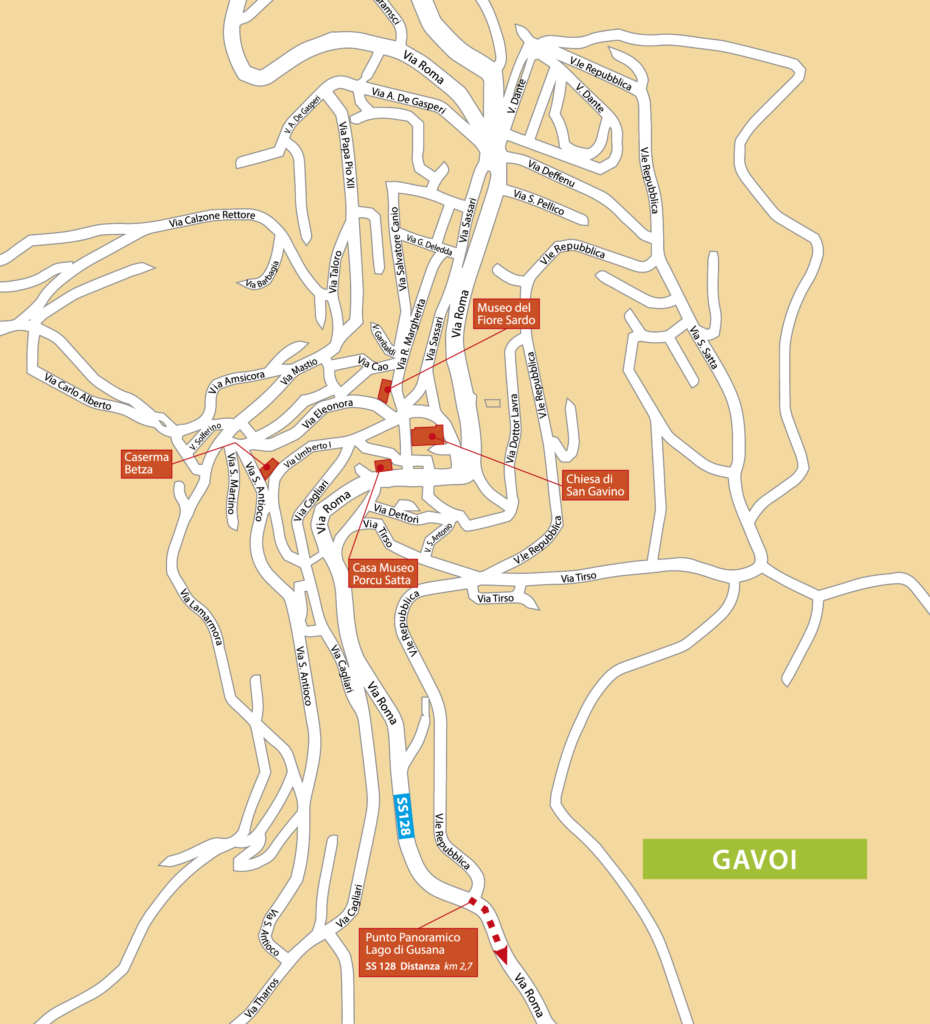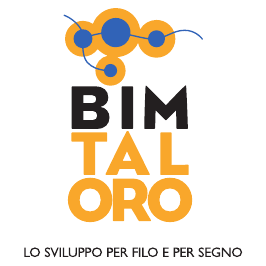Parish Church of Santi Gavino, Proto e Gianuario
Built between the 15th and 16th century, this late Catalan gothic church rises in the village centre. It features a 33 metre tall, square plan bell tower that is ornate with Romanic motifs, pointed arches and rows of blind arcades. The tower clock and a south facing meridian complete the bell tower, while a magnificent rose window decorates the church façade.
Prior to its current design, the upper part of the tower underwent several changes over time. The old clock, made by clockmaker Antonio Chessa from Osilo in 1871, and now stored inside the Town Hall, was replaced with a new one. The old bells are now kept inside the church, near the entrance to the bell tower.
The rose window, considered to be one of the island’s most stunning examples of its kind, is made from trachyte and measures 2.90 m in diameter. Small columns arranged in a circle radiate from a central roundel to form petals surrounded by a thick dentil patterned frame.
The building has a rectangular plan and is divided into three barrel-vaulted naves with trachyte ribs supporting the vaults. The aisles are lined respectively by six chapels on the right and three on the left, and are connected by round arches, while the central nave is divided into five bays by four intrados.
The church displays the building techniques that are typical of Catalan architecture and that create the perception of a small scale, cosy and welcoming space.
The church hosts very interesting and beautifully crafted 18th century works of art made of wood that are very well preserved. They include: the pulpit, the baptismal font, the choir and the confessionals.
The pulpit has an octagonal shape and is decorated with polychromatic shades of green and gold. Each of the sides has carvings in geometric patterns and ornamental leaf forms, dentils and friezes. The central panel contains the coat of arms of the town of Porto Torres to commemorate the origin of the martyrs that the church is named after.
The Baptismal Font dates back to 1706, as shown on the front inscription. Set in the nave on the right immediately after the doorway, it is also polychromatic and copies the style and friezes of the pulpit.
The Choir dates between 1749 and 1762. It is made from chestnut and walnut wood. Unlike the previous artefacts, it has a very simple shape and no additional polychromatic decorations. The choir stalls are characterised by geometric lines that contain decorative flat rosettes. By contrast, the cathedra is bigger and overhung by a wooden canopy.
Finally, the two polychromatic confessionals are identical apart from the two side wings, which are decorated respectively with iconic and palm shaped motifs. There is a thick latticed opening on the top part of the small door and a large, gilded sun below.
Liturgical celebrations for the martyrs from Porto Torres are held on October 25.
Text by Laura Melis

planimetria_Gavoi_02_es-01
 BIM TALORO
BIM TALORO